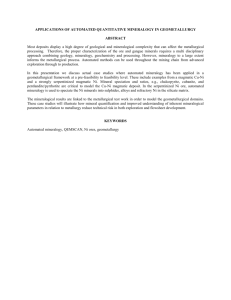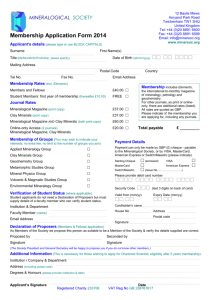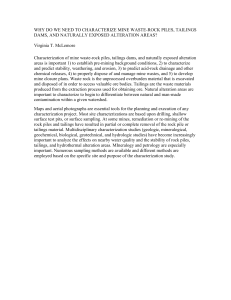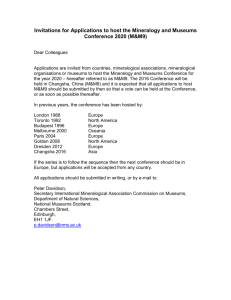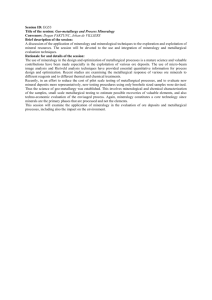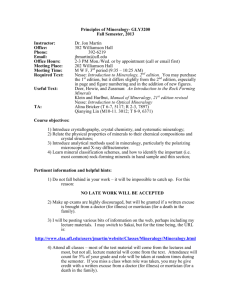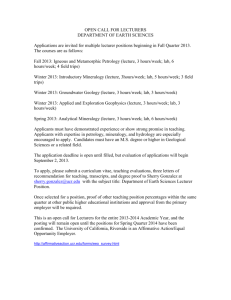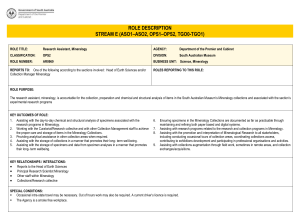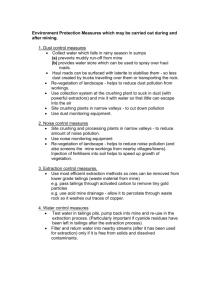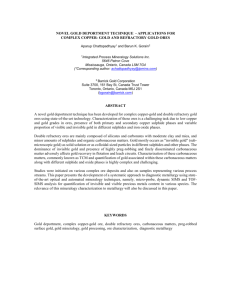development and calibration of a reconciliated modal mineralogy
advertisement
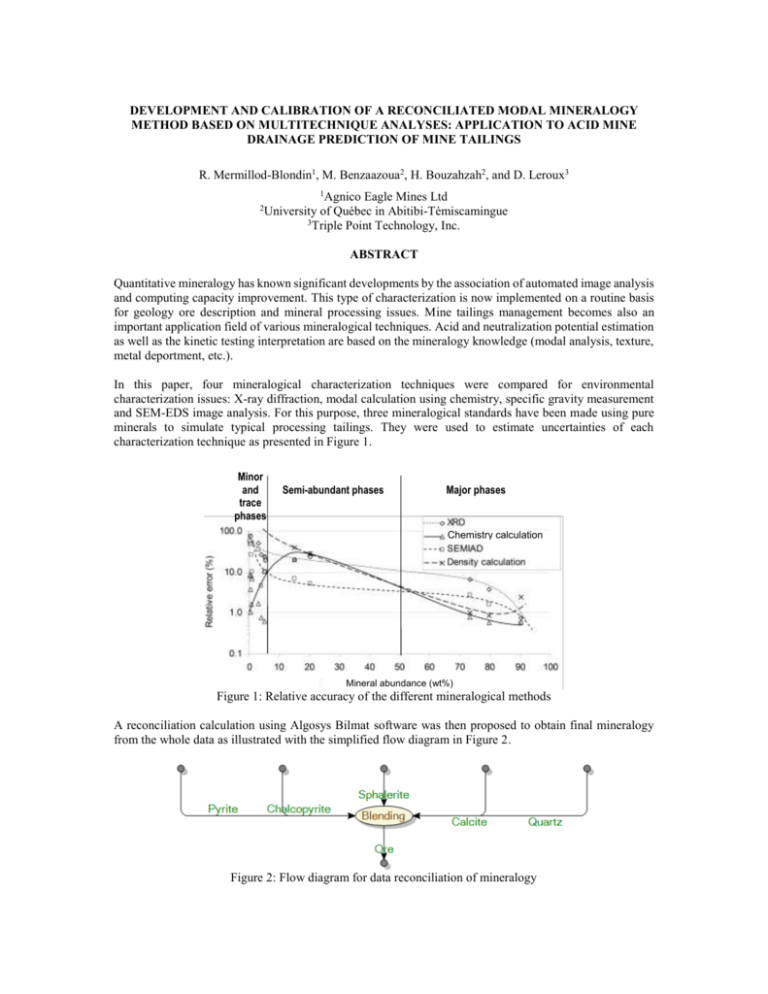
DEVELOPMENT AND CALIBRATION OF A RECONCILIATED MODAL MINERALOGY METHOD BASED ON MULTITECHNIQUE ANALYSES: APPLICATION TO ACID MINE DRAINAGE PREDICTION OF MINE TAILINGS R. Mermillod-Blondin1, M. Benzaazoua2, H. Bouzahzah2, and D. Leroux3 1 Agnico Eagle Mines Ltd University of Québec in Abitibi-Témiscamingue 3 Triple Point Technology, Inc. 2 ABSTRACT Quantitative mineralogy has known significant developments by the association of automated image analysis and computing capacity improvement. This type of characterization is now implemented on a routine basis for geology ore description and mineral processing issues. Mine tailings management becomes also an important application field of various mineralogical techniques. Acid and neutralization potential estimation as well as the kinetic testing interpretation are based on the mineralogy knowledge (modal analysis, texture, metal deportment, etc.). In this paper, four mineralogical characterization techniques were compared for environmental characterization issues: X-ray diffraction, modal calculation using chemistry, specific gravity measurement and SEM-EDS image analysis. For this purpose, three mineralogical standards have been made using pure minerals to simulate typical processing tailings. They were used to estimate uncertainties of each characterization technique as presented in Figure 1. Minor and trace phases Semi-abondant phases phases Semi-abundant Major phases Chemistry calculation Mineral abundance (wt%) Figure 1: Relative accuracy of the different mineralogical methods A reconciliation calculation using Algosys Bilmat software was then proposed to obtain final mineralogy from the whole data as illustrated with the simplified flow diagram in Figure 2. Figure 2: Flow diagram for data reconciliation of mineralogy The reconciliation routine was applied to the acid and neutralization potential characterization of different mine tailings. The conclusion in term of acid mine drainage was qualified from mineralogical calculated acid potential and neutralization potential equilibrium. The reconciliated data offer the opportunity to describe metal deportment in term of mineral bearing-phase and therefore orientate metal leaching estimation in case of neutral contaminated drainage. KEYWORDS Mineralogy, chemistry, reconciliation, acid mine drainage, calibration standard

